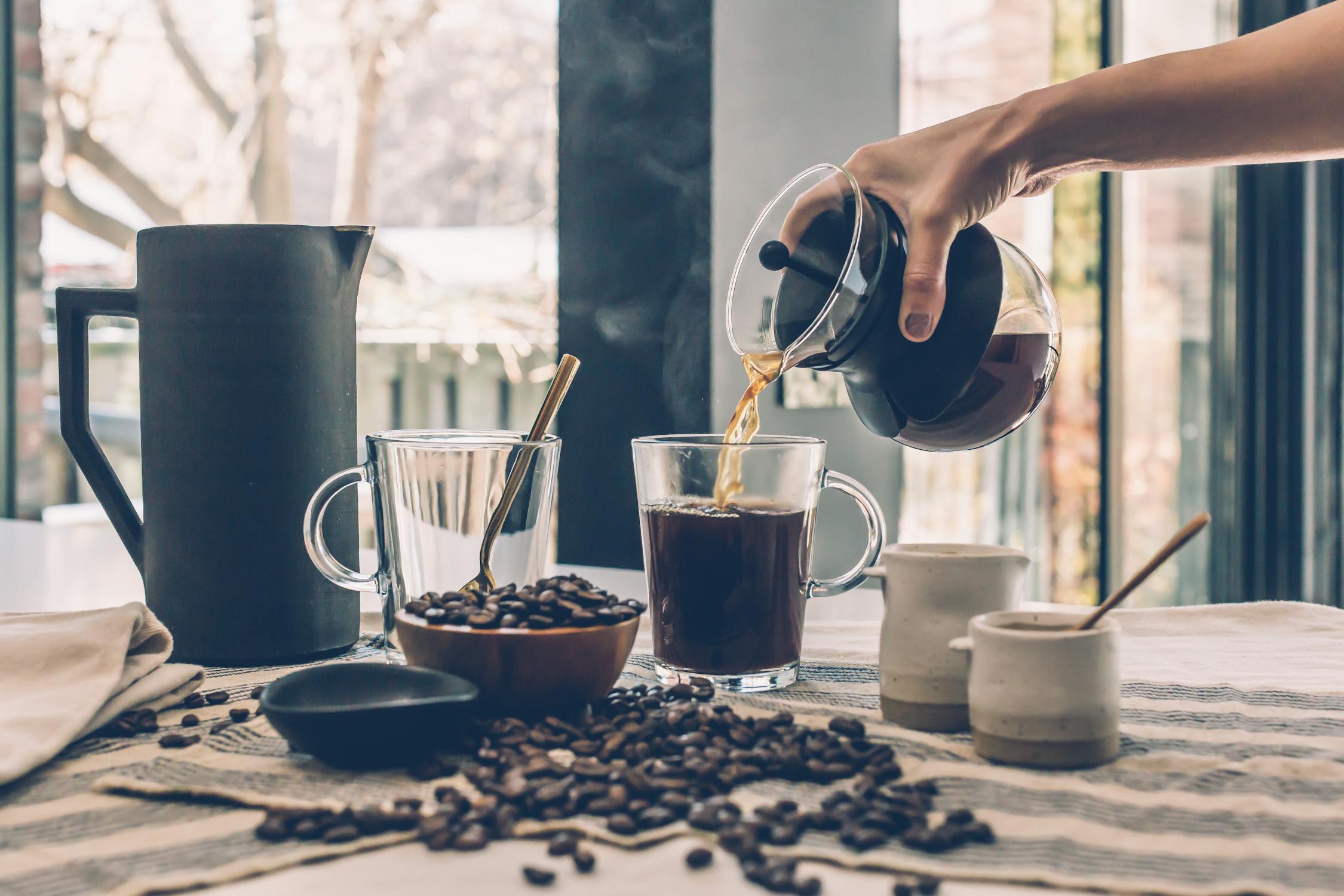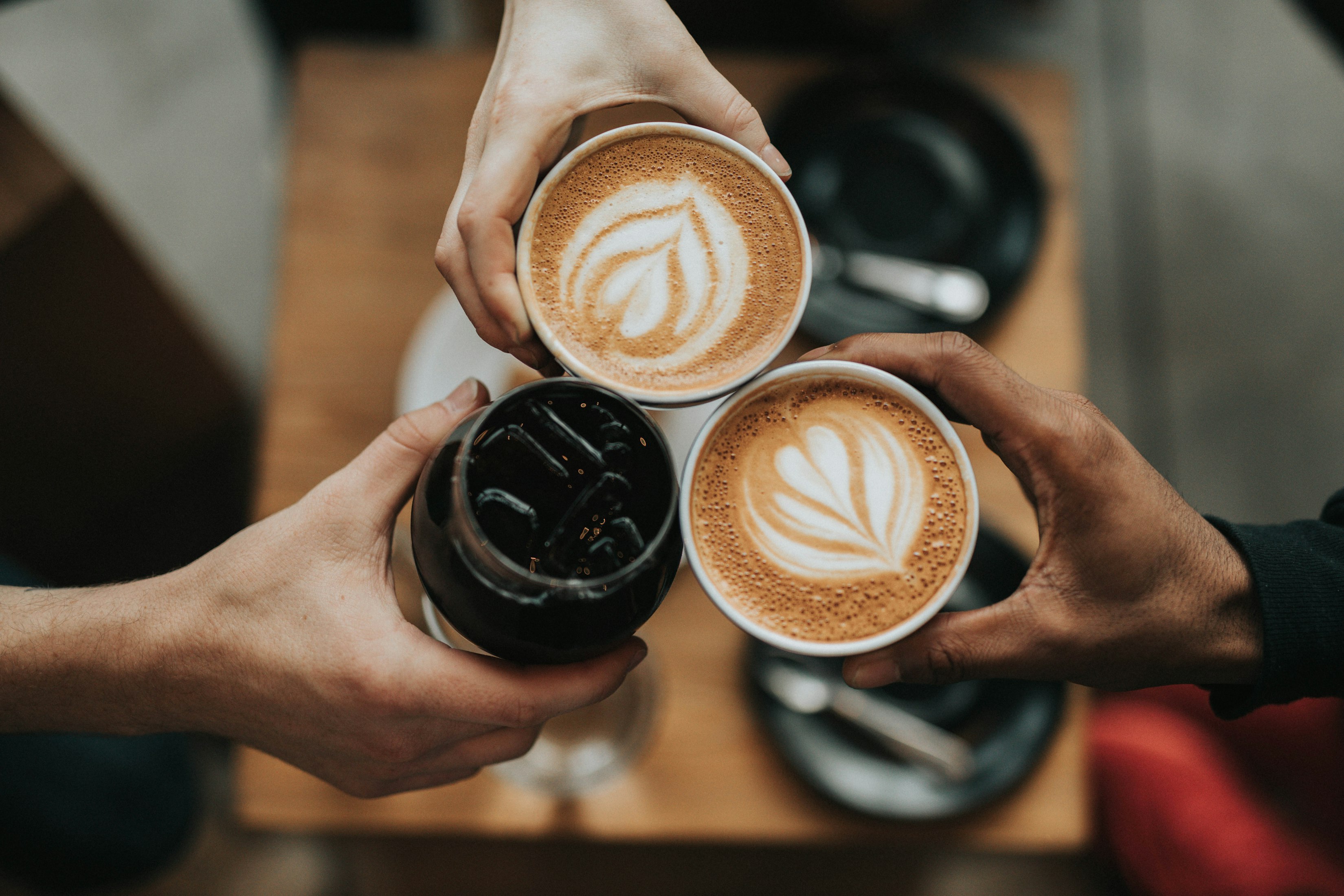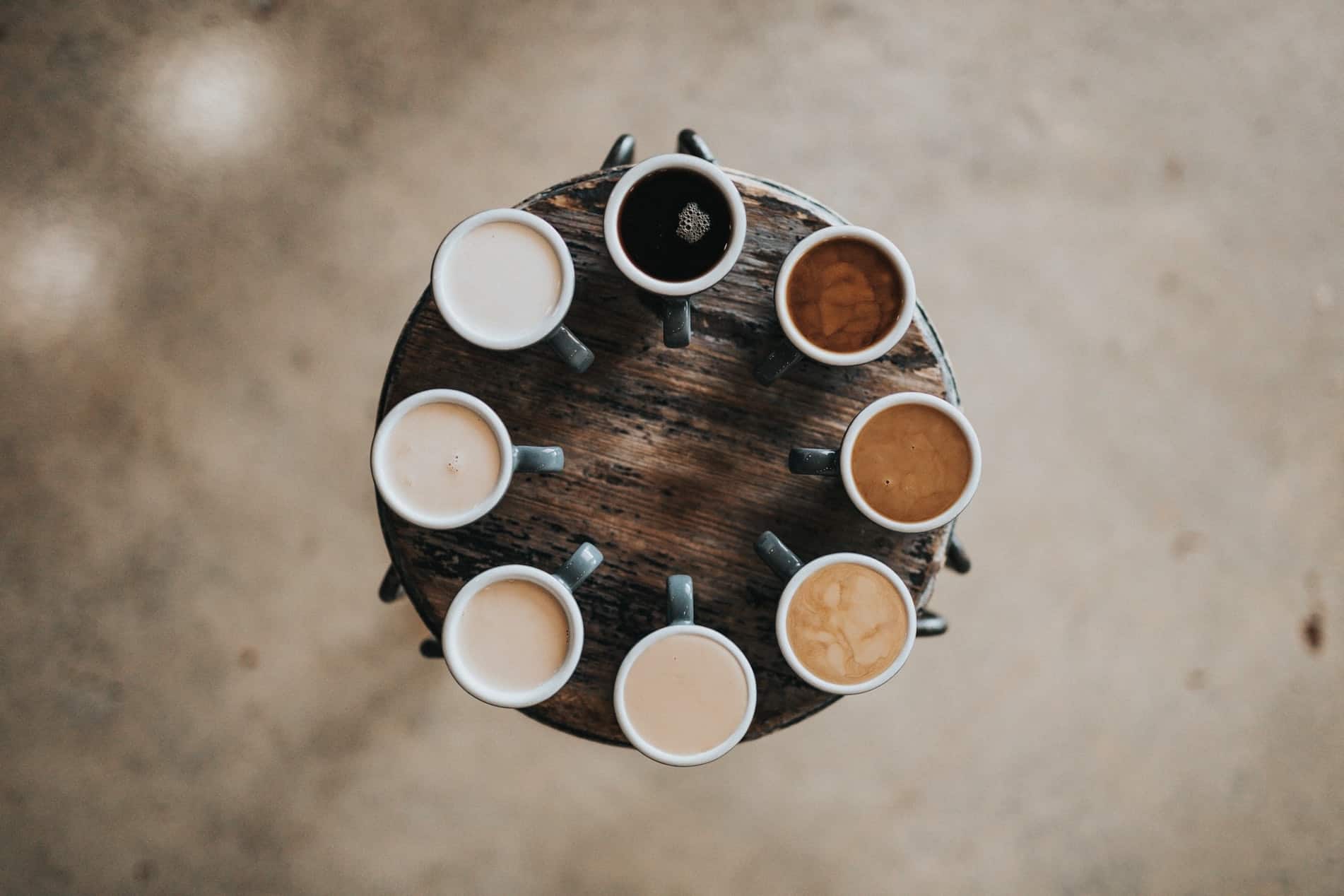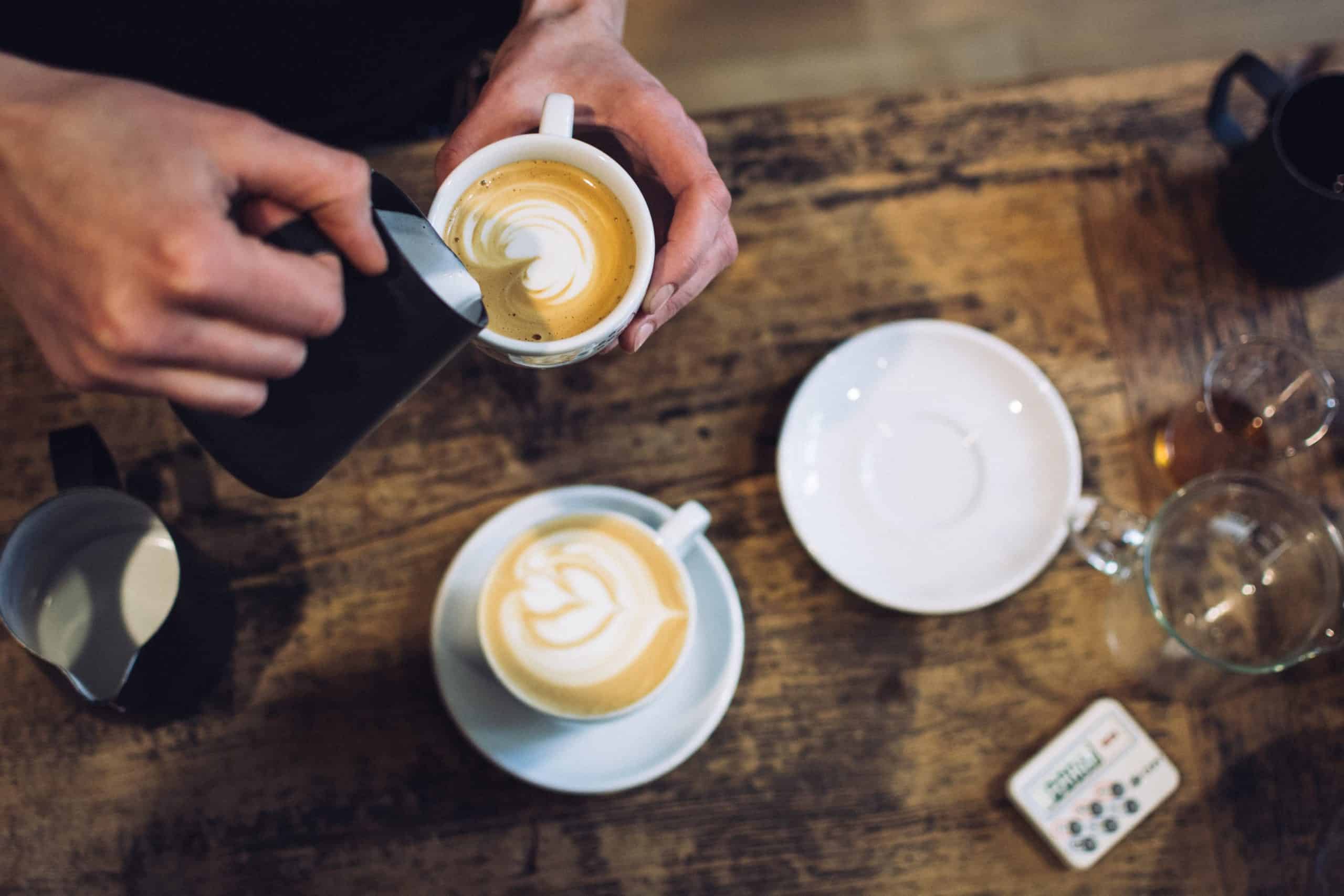No one loves coffee more than Australians! We love a hot cuppa here but how much did you know about coffee? And is a cup of coffee a day bad for you?
Let’s take a look at the fascinating stories behind this beverage.

The discovery of coffee
The history of coffee is as full and rich as the finest blend. Legend says an Ethiopian goat herder named Kaldi noticed his goats being more active and refusing to sleep when they ate the beans from a certain tree. After the local Abbott heard of these observations, he concocted a drink and became the first person to stay up late studying with a caffeine buzz. From there, word spread to Arabia and the morning cuppa started to spread across the world.
While this story may well be embellished, what we do know is that coffee was first cultivated and sold on the Arabian peninsula. By the 1400s, people in Turkey, Egypt, Persia and Syria were all enjoying a chat over a cup of coffee at home and in public coffee houses.
With the increase of travel and trade that came from the 1400s onwards, European travellers soon brought tales of the strange, dark brew of the East.
By the 1600s, coffee had well and truly found its way to Europe. It was a rocky start though for caffeine addict wannabes! A great number of the clergy took offence to the bitter drink and decided it was satanic. Eventually, the pope was called on to weigh in. Pope Clement VIII tried coffee for himself, and, luckily for us, quite liked it. Once coffee had papal approval, Europeans were free to enjoy a morning caffeine boost. Eventually, and for obvious reasons, coffee became the favourite morning beverage over beer and wine.
Is a cup of coffee a day good for you?
These days we seem to be inundated with health advice. One week something is then next big superfood and the next it will make you sick.
Coffee has by no means escaped the rollercoaster. You may have heard, for instance, that drinking hot coffee can give you cancer. While this may be true, it is important to dig deeper to understand the real truth.
Firstly, the risks coffee poses apply just as much to hot tea and hot chocolate. Next, this information comes mostly from one study in one country, Iran. As it happens, Iran has a higher rate of oesophageal cancer than many other countries, meaning that the rates shown in the study were already higher.
As well as this, the relative danger of hot drinks in causing oesophageal cancer is far lower than other risk factors like smoking or excessive alcohol consumption. Finally, and perhaps most tellingly, the temperature at which the risk of cancer begins to increase is above 60C. Most people prefer their coffee comfortably under this temperature, with one study showing that the optimal temperature for coffee is 57.8C.
Hopefully, this begins to put into perspective how careful you should be when reading sensationalist headlines about coffee. There is a very small risk that drinking excessively hot coffee may increase your chances of oesophageal cancer. Does this actually affect your average coffee drinker? Is drinking a cup of coffee a day bad for you? Almost certainly not. In fact, there may be good reasons to drink up!

The good stuff (as declared by scientists!)
Now we know that coffee is not bad for us, let’s examine its benefits:
-
Coffee makes you feel good
Ok, maybe not the most scientific-sounding benefit but it certainly is true! In fact, when you dig further into why it makes you feel good, you will discover that the energy levels and increased energy can also improve brain function! So only does coffee make you feel good, it can make you smarter.
-
Coffee helps you exercise
Being a stimulant, coffee helps to release adrenaline levels. Adrenaline stimulates your fight or flight response, meaning that you will have more energy for the gym!
-
It helps you lose weight
Along with your increased output at the gym, coffee increases your metabolism and helps you burn fat. Feel good and lose weight? Coffee is sounding pretty good already.
-
Coffee may hinder Diabetes 2
That’s right, not only are you feeling good and losing weight you are also reducing your risk of type 2 diabetes. We don’t know why yet but scientific studies are finding strong correlations between coffee drinkers and low levels of diabetes.
Remember, as with all good things, moderation is important. There are a few reasons to moderate your coffee intake.
What happens when you drink too much coffee?
One of the things that makes coffee so great is its high levels of caffeine. Caffeine is, however, a stimulant. That puts it in the same category as some hard drugs like cocaine and amphetamines. While caffeine is clearly not as dangerous as those drugs, it still has its downsides.
Drinking too much coffee, like with any other drug, can lead to addiction. Addiction means that you become dependent on caffeine and will have withdrawal symptoms is you go without. The most common symptom of caffeine withdrawal is a headache that can truly be debilitating.
Too much coffee can exacerbate anxiety, especially in those who are already prone to the disorder. It can make it very difficult to sleep and because it is dietetic, make you rush to the loo. The other problem with prolonged caffeine dependence is that it actually keeps you down. When you drink coffee and feel more awake and alert you are actually just resetting to how you might feel without your coffee dependance.
Despite all this, as long as you regulate your caffeine intake and avoid coffee later in the day, there is no reason the average person shouldn’t enjoy a couple of coffees a day.
The most common and favourite coffees in Australia
One of the beauties of coffee is its versatility. These days more than ever before, we have a wondrous array of coffees to choose from. No longer is it ‘white or black’, the choice can be a little bewildering at times. To help you out, here is a quick guide to the most common styles of coffee that people enjoy today:
-
Espresso
Espresso forms the base of most of the other coffee styles. It can, of course, also be enjoyed on its own. A strong drink, made from forcing hot water through finely-ground coffee beans, espresso is usually served in a small glass. Here in Australia, espresso is also known as a short black.
-
Flat White
The flat white is an Aussie/New Zealand invention and remains a perennial favourite. A single shot of espresso mixed with steamed milk, the flat white is a smooth and simple coffee not to be confused with a latte.
-
Latte
Very similar to the flat white, a latte adds a layer of milk foam to create a frothier alternative.
-
Cappuccino
The Cappuccino differs from the latte mostly in the ratios of espresso, milk and foam. A latte is made mostly of steamed milk while the cappuccino has equal amounts of espresso, milk and foam. For a delicious added bonus, most cappuccinos are topped with a layer of shaved chocolate. Traditionally, a Cappuccino is served lukewarm, although Australians tend to prefer their piping hot. By the way, the word cappuccio in Italian means “hood” or something that covers the head. Makes sense!
-
Macchiato
The macchiato is a great alternative for those who find espresso too strong. A layer of foam is added for a lighter and creamier alternative.
-
Long Black
For the true coffee lover, a long black is another Aussie/New Zealand favourite. Two shots of espresso over hot water make for a strong caffeine hit.
-
Iced Coffee
For a hot day or those who prefer a cold drink, iced coffee is a refreshing alternative. Iced coffee is available in about as many varieties as regular coffee with the most popular being the sweet and milky iced latte.

Coffee temptations around the world
Now that coffee has been around for hundreds of years we have had time to find all the best ways to enjoy it. Beyond the classics described above, coffee comes in so many forms.
You may be happy with a tin of International Roast but here a few of the more decadent and luxurious coffees from around the world:
-
Turkish Coffee
As one of the first countries to adopt coffee, Turkish Coffee has a very long-standing tradition. Turkish coffee uses very finely coffee beans and is cooked in a special pot called a cezve. A very strong and aromatic coffee, if you want it sweetened you must add sugar at the cooking stage as it is never added after.
-
Vietnamese Coffee
Thought Vietnam might be a relative newcomer to the joys of coffee, only getting their first taste when the French introduced it in the 1800s, Vietnam is no small fry in the coffee game. The Vietnamese took to coffee instantly and it grows well in their country. In fact, Vietnam is one of the worlds biggest coffee producers. Predominantly using very strong Robusta coffee, the Vietnamese brew is slowly. Using a filter and drip technique, the coffee is finished with sweetened condensed milk, making for a strong but sweet delight!
-
Irish Coffee:
Many people will throw some whiskey in a mug of coffee and call it an Irish Coffee. While this may be one form, a traditional Irish coffee is slightly different. To make a traditional Irish coffee you need to add at least one teaspoon of sugar and a shot of Irish Whiskey to a cup of black coffee. Next, thick cream should be poured over a spoon to create a layer on top of the coffee. Drink the coffee through the cream and you will enjoy a traditional Irish Coffee!
-
Vienna Coffee:
Take a regular coffee cup and add two shots of espresso. Next, infuse with whipped cream, filling the cup. Swirl the cream and add chocolate sprinkles to taste. Enjoy the coffee through the cream and you have a decadent Vienna Coffee.
-
Butter Coffee
Currently, people are enjoying the fad of bulletproof or butter coffee. By adding a spoonful of fresh butter to your coffee it is said that it evens out the energy boost from the caffeine, making it last longer. The facts are not all in yet but many swear by the taste and efficacy of bulletproof coffee. Just watch out, adding butter to your coffee is going to add even more saturated fat than milk or cream!
-
Kopi Luwak
Kopi Luwak or Civet Coffee has risen to fame recently for being the most expensive coffee in the world. Made in South East Asia, this coffee requires the beans to be partially digested by an Asian Palm Civet, a type of small mammal. Producers claim that the civets will choose only the best beans and that their digestion process increases the flavour of the beans. Coming in at close to $100 a teaspoon, Kopi Luwak is as extreme as coffee can get. A must-try for the true coffee aficionado!
-
Coffee Desserts
Because the flavour of coffee is so good and pairs well with sugar, it can be found in a number of popular desserts. From a simple coffee cake to tiramisu to the delicious coffee and ice-cream mix of an affogato, any given coffee dessert is guaranteed to be delicious.

Come to Hastings Coffee co for a delicious hot or iced coffee made just how you like it
Whatever your coffee preference, there is one thing for certain; you will get a good coffee at Hastings Coffee Co. at the Westport Club.
Boasting world-class baristas, as many coffee options as you could dream of and a selection of coffee flavoured treats, there is no better place to come and celebrate Summer, the holidays and this paradise we call home. See you there!

